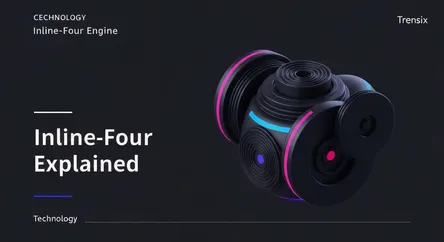Technology
Inline-Four Engine Explained

Discover the inline-four engine, a compact and efficient powerplant. Learn why this balanced four-cylinder design remains the most popular choice.
What is it?
An inline-four engine, or I4, is a common internal combustion engine with four cylinders arranged in a single straight line. This simple configuration allows for a single cylinder head and crankshaft, making it relatively inexpensive to manufacture. Its compact size makes it suitable for a wide range of vehicles, from economy cars to sedans and SUVs. Known for its good primary balance, the inline-four provides smooth operation, especially at lower to mid-range RPMs. It's one of the most popular engine designs in automotive history due to its simplicity and versatility.
Why is it trending?
The inline-four's popularity is enduring because it strikes a perfect balance between efficiency and performance. Amid stricter emissions standards, automakers are "downsizing" larger engines, often replacing V6s with turbocharged inline-fours. This delivers comparable power with better fuel economy and lower emissions. Furthermore, its compact design is ideal for modern hybrid powertrains, where it's easily paired with electric motors. This adaptability ensures the I4 engine remains a relevant and forward-thinking choice in a rapidly evolving automotive landscape.
How does it affect people?
For the average car owner, the prevalence of the inline-four means more affordable and economical vehicles. Cars with I4 engines typically have lower purchase prices and better fuel economy, saving drivers money. Maintenance and repair costs are also generally lower due to the engine's simpler design and wide availability of parts. This blend of efficiency, reliability, and cost-effectiveness makes vehicles with inline-four engines a practical and accessible choice for millions, defining the daily driving experience for the majority of motorists by making car ownership more manageable.